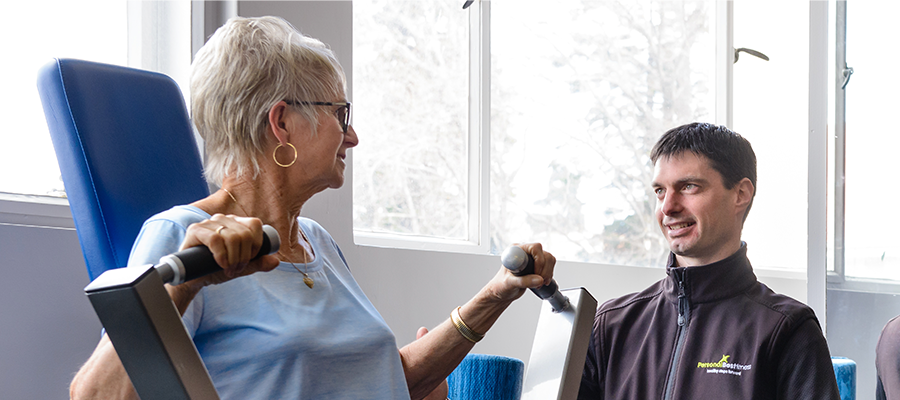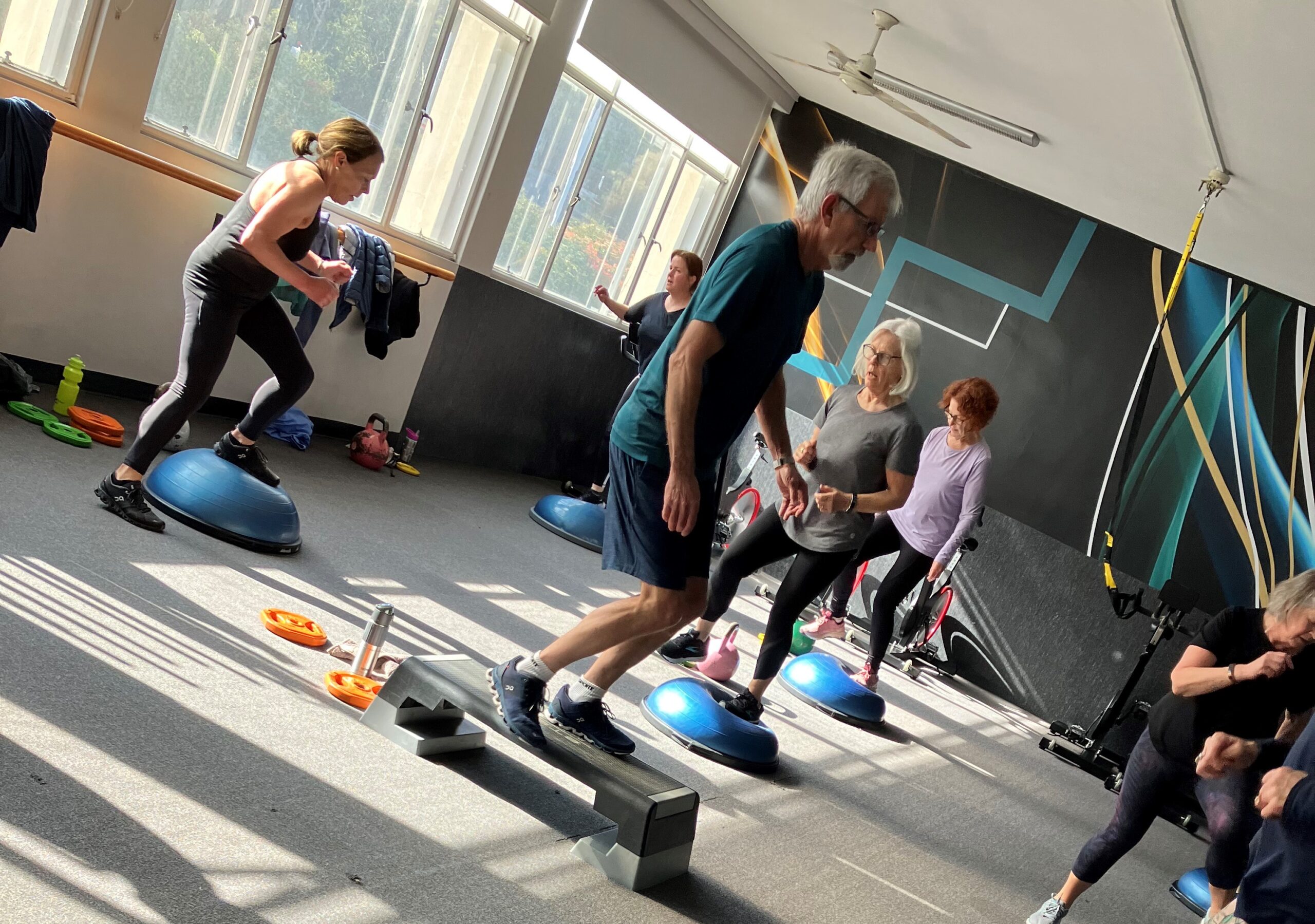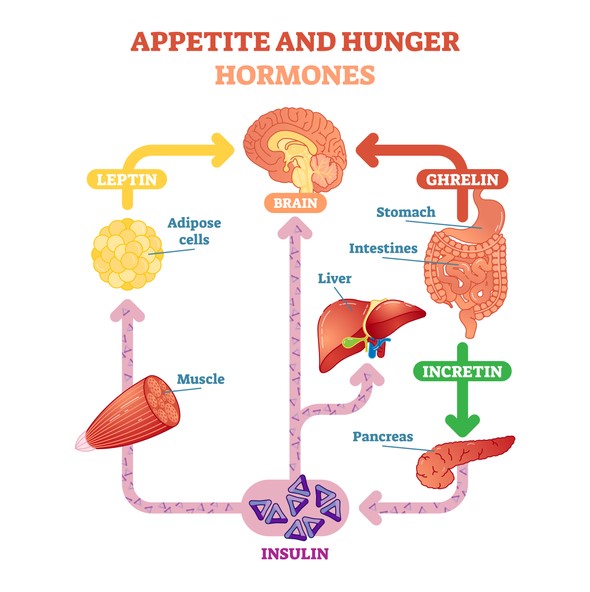One of the first questions we ask those who are new to Personal Best Fitness is “What would you like to achieve?” Often the response is “I want to get fit.” Sounds quite straight forward doesn’t it, but what does it actually mean? Getting fit means different things to different people. A common definition is,
“To be physically fit means to be in a state of health and well-being. Physical fitness is defined as the body’s ability to function efficiently and effectively in work and leisure activities, to be healthy, to resist disease and to react to emergency situations.
Helping a client “become fit” can take a variety of approaches and avenues and can be very different for ‘everybody and mind’.
There are 3 or 4 aspects of “Being Fit” that we may focus on with you at Personal Best:
- Improving your cardiovascular/aerobic fitness/ huff and puff.
- Help you increase your range of motion or flexibility.
- Improve your strength.
And we will program this in such a way that is functional to your needs.
The aspects that we focus on will depend upon your goals and how your body is currently functioning. It is important to recognise that different approaches and focuses will result in different outcomes and will facilitate significant improvements in both your health and fitness.
Cardiovascular fitness or endurance can be improved with exercise that is performed at a medium level, greater than 20 minutes in duration. This helps improve the health of your heart and lungs. Running, walking, rowing, swimming and bike riding are all activities that help enhance your cardiovascular or aerobic capacity.
The formula used to decipher what your exercise training zone is 220 – age =? divided by 65% and 85%. Below are some examples for a 40 and 60-year-old who is looking to work at either training zone.
If you are age 40 years a ‘starting’ exercise zone would be a heart rate of 117 beats per minute (bpm) and the high-end intensity would be 153bpm.
If you are aged 60 years a ‘starting’ zone would be a rate of 104 bpm and a high-end zone would be 136bpm.
When getting started at Personal Best your personal trainer will direct you to the appropriate zone for you, taking into consideration the following:
- Your health
- If you have done vigorous exercise recently
- Any aches and pains that you may have
- And what goals you have
These zones should be viewed as a guide and individual advice should be sort.
Flexibility refers to the range of movement in a joint or series of joints, and length in muscles that cross the joints to induce a bending movement or motion. Flexibility varies between individuals, particularly in terms of differences in muscle length of multi-joint muscles. Some examples of multi joint muscles are the hamstrings, which cross both the hip and knee joints.
Flexibility in some joints can improve their range of movement. Stretching being a common medium to maintain or improve this range of movement. Stretch receptors have two parts: Spindle cells and Golgi tendons. Spindle cells, located in the centre of a muscle, send messages for the muscle to contract. On the other hand, golgi tendon receptors are located near the end of a muscle fibre and send messages for the muscle to relax. As these receptors are trained through continual use, stretching becomes easier. When reflexes that inhibit flexibility are released joints are then able to have greater range of movement.
There are a number of reasons why strength training is important. Some of these reasons are to maintain muscle tissue to protect your joints, build and maintain strong bones, control body fat, and decrease the risk of injury. Depending on what your goals are, your personal trainer will set your program accordingly.
- If it is hypertrophy that you are after then 4 reps at 90% of your maximum load to 10 reps at 75% of your maximum load is required. Hypertrophy is a term for the growth and increase of the size of muscle cells.
- If muscular endurance is what you are after approximately 15 to 20 reps at 70% is required. Muscular endurance is the ability of a muscle or group of muscles to sustain repeated contractions against a resistance for an extended period of time. Some of the activities that require muscular endurance are, sustained walking or running, cycling, swimming, circuit training, aerobics and of course resistance training.
Functional exercises train your muscles to work together and prepare them for daily tasks by simulating common movements you might do at home, work or in sports. For example, a squat is a functional exercise because it trains the muscles that you use when you stand up and sit down from a chair or pick up objects off the ground.
When rehabilitating a client from injury, or building function back into their daily life, exercises are ‘regressed’ so that the client can move with confidence again and trust their bodies as they perform these movements. Understanding how the body moves is part of the rehabilitation process and the personal trainers at Personal Best are able to deliver this knowledge with skill and professionalism. Some of the exercises personal trainers prescribe their clients may be walking along a plank of wood on the ground heel to toe to improve balance, reaching up the wall with one hand while in a staggered stance, to improve posture. These types of exercises then lead to more complex forms of movement and with weights and or resistance.
“Being fit” has so many different meanings. Ask the question, fit for what? Fit to wash the car, run a fun run, pick the grandkids up, play netball, or fit to walk 15000 steps each day on holidays. All of these things are important as long as they are gradually progressed and applied in an individual manner. Remember, not everything fits the same person and we all require different approaches. Your goals over time will evolve as you progress along the continuum that is your fitness.
If you are unsure what is ‘best’ for you, ask us about booking a personal training session.
Fran Sullivan
Master Personal Trainer

 Timetable
Timetable 6234 5969
6234 5969

